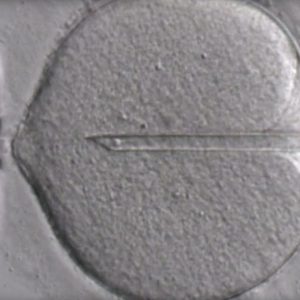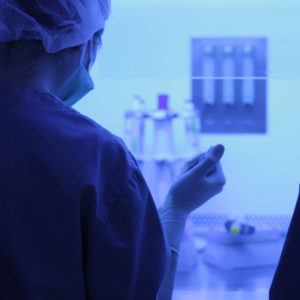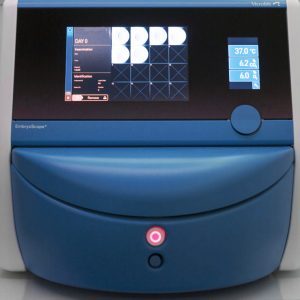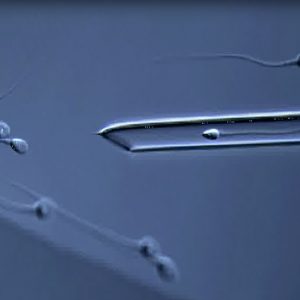Male infertility is one of the most common causes for which patients resort to Assisted Reproduction treatments. In 1992, a medical breakthrough was made with the creation of Intracytoplasmic Injection (ICSI), which marked a turning point in the treatment of male factor infertility.
In this article, the specialists in Assisted Reproduction at IVFforYOU will explain what the ICSI technique consists of, in which cases it is recommended, its advantages over other techniques and its price in Spain.
Intracytoplasmic Injection (ICSI)
The Intracytoplasmic Injection technique, or better known as ICSI, is one of the main In Vitro Fertilisation procedures that exist to achieve pregnancy.
ICSI consists of injecting a sperm directly into the interior of the oocyte, reducing to a minimum any problems it may have in achieving fertilisation due to its morphology or any possible difficulties the oocyte may have. Due to the control that exists in the fertilisation process, it is one of the techniques with the best success rates.
When talking about success rates, it is important to take into consideration that there are certain factors that can directly alter them, for example:
– Selection of sperm with good morphology and motility
– Age of patients
– Ovarian reserve of the woman
– Health status of the patient who will be carrying the baby
– Low Anti-Müllerian Hormone (AMH) values
When is ICSI recommended?
This technique is mainly recommended to treat cases of male infertility, such as those with a very low motile sperm count, few sperm of a quality suitable for pregnancy or a low sperm concentration (oligozoospermia).
ICSI is also recommended for patients who have had a vasectomy or previously frozen sperm, as well as for those with infectious diseases.
Finally, it is very common for doctors to recommend ICSI to increase fertilisation rates in patients undergoing conventional In Vitro Fertilisation.
Your first Assisted Reproduction visit free of charge
Difference between conventional In Vitro Fertilisation (IVF) and ICSI
ICSI is the alternative method to conventional In Vitro Fertilisation.
Although conventional IVF has very similar pregnancy rates to ICSI, the main difference between the two methods is the way in which the sperm is introduced into the oocyte membrane.
In conventional IVF, on the one hand, the sperm must independently pass through the oocyte membrane to fertilise it. To achieve this, the quality and morphology of the sperm will be decisive.
In the case of ICSI, a sperm is microinjected directly into the egg. Because fertilisation can be controlled much more easily with ICSI, compared to the natural process that takes place during conventional IVF, this technique is ideal for preventing fertilisation failure.
Possible side effects of the ICSI technique
Although In Vitro Fertilisation treatments with ICSI are very common in patients who resort to Assisted Reproduction, there are some scenarios where the following problems may occur in the woman:
– Multiple pregnancy: This risk can be significantly reduced if a good quality embryo is selected, thus avoiding the need to transfer more than one embryo and the consequent possibility of generating a multiple pregnancy.
– Ovarian hyperstimulation syndrome (OHSS): Due to the fact that IVF treatments require ovarian stimulation with medication, this can cause discomfort for the patient.
Pregnancy symptoms after ICSI
The symptoms of a possible pregnancy are very similar in all Assisted Reproduction treatments and especially in ICSI and other In Vitro Fertilisation techniques.
The most common pregnancy symptoms after IVF and ICSI include:
– Abdominal bloating due to ovarian stimulation
– Breast discomfort due to hormone medication
– Muscle fatigue or tiredness
– Dizziness and nausea
Advantages and disadvantages of Intracytoplasmic Sperm Injection
– High success rates compared to other assisted reproductive techniques
– Sperm with 0% motility can be used.
– High probability of obtaining fertilised eggs
– Avoids the possibility of developing polyspermia (more than one sperm fertilising the oocyte).
– Slightly higher price than other techniques, due to its complexity and efficiency.
– The experience of the assisted reproduction centre in performing ICSI and selecting quality sperm will be decisive.
– Possibility of having a multiple pregnancy
Price of the ICSI technique in Spain
The prices for carrying out an ICSI in Spain can vary quite a lot, depending on what the Assisted Reproduction clinic includes in this service.
In general, IVF centres in Spain consider the price of conventional In Vitro Fertilisation as a base and to this is added the cost of ICSI, with an approximate total price of between €3,500 and €5,500.
At IVFforYOU we are proud to offer very competitive prices, which allow access to the best facilities and recognised professionals. At our Assisted Reproduction centre, the cost of ICSI is €385, which must be added to the price of conventional In Vitro Fertilisation (€2,600), giving a total of €2,985.
It is important to note that the price may vary if, in addition, egg donation is required or if your doctor advises you to undergo a special test. In addition, generally, in Assisted Reproduction treatments, the cost of hormone medication is not included in the total price.
If you are interested in any Assisted Reproduction treatment, at IVFforYOU we will be delighted to guide you, the first visit is totally free for you!










